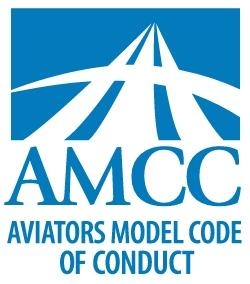Sat, Jan 05, 2013
Abridged And Simplified For A Younger Audience
"Teaching the Aviators Model Code of Conduct to Kids," an abridged and simplified explanation of the Aviators Model Code of Conduct (AMCC), was released Thursday by the project’s Permanent Editorial Board. Written for use in the classroom with language appropriate for children, the document exposes young students to important values shared by safe and successful aviators.

“Think Global Flight and Teaching the Aviators Model Code of Conduct to Kids will bring awareness of the boundless opportunities within the aviation and aerospace industries to the classrooms around the world," said Judith A. “Captain Judy” Rice, founder of Think Global Flight. "The AMCC will introduce students to what it takes to be a good pilot, to fly safely, and be a good passenger if they take a ride in a small plane. Learning the basic rules of flying will help them succeed in many areas of their lives—as students now, and as adults in the future.”
Developed by a team of aviation professionals and drawing upon decades of research and experience, the AMCC promotes ongoing improvements in flying quality and safety. The AMCC:
- Promotes flight and ground safety, professionalism, and pilot contributions to the aviation community and society at large.
- Encourages the development and adoption of good judgment, ethical behavior, and personal responsibility.
- Supports improved communications between pilots, regulators, and others in the aviation industry.
The Code of Conduct has received extensive industry review and presents a vision of aviation excellence within its seven sections: (1) General Responsibilities of Aviators; (2) Passengers and People on the Surface; (3) Training and Proficiency; (4) Security; (5) Environmental Issues; (6) Use of Technology; (7) Advancement and Promotion of Aviation. The Code is a living document and will be periodically updated to reflect changes in standards, practice, and the aviation environment.
The Aviators Model Code of Conduct anchors a family of similar codes including the Aviation Maintenance Technicians Model Code of Conduct, the Flight Instructors Model Code of Conduct, the Glider Aviators Model Code of Conduct, the Light Sport Aviators Model Code of Conduct, the Seaplane Pilots Model Code of Conduct, and the Student Pilots Model Code of Conduct. Developed as a volunteer effort, each is available as a free public service along with supporting materials online.
More News
Aero Linx: Model Aeronautical Association of Australia MAAA clubs are about fun flying, camaraderie and community. For over 75 years, the MAAA has been Australia’s largest fl>[...]
Touchdown Zone Lighting Two rows of transverse light bars located symmetrically about the runway centerline normally at 100 foot intervals. The basic system extends 3,000 feet alon>[...]
“Discovery and innovation are central to our mission at Virgin Galactic. We’re excited to build on our successful record of facilitating scientific experiments in subor>[...]
How To Get A Story On Aero-TV News/Feature Programming How do I submit a story idea or lead to Aero-TV? If you would like to submit a story idea or lead, please contact Jim Campbel>[...]
Student Pilot Reported That During Rotation, “All Of A Sudden The Back Of The Plane Kicked To The Right..." Analysis: The student pilot reported that during rotation, “>[...]
 ANN's Daily Aero-Linx (05.02.24)
ANN's Daily Aero-Linx (05.02.24) ANN's Daily Aero-Term (05.02.24): Touchdown Zone Lighting
ANN's Daily Aero-Term (05.02.24): Touchdown Zone Lighting Aero-News: Quote of the Day (05.02.24)
Aero-News: Quote of the Day (05.02.24) ANN FAQ: Contributing To Aero-TV
ANN FAQ: Contributing To Aero-TV NTSB Final Report: Cirrus Design Corp SR20
NTSB Final Report: Cirrus Design Corp SR20



